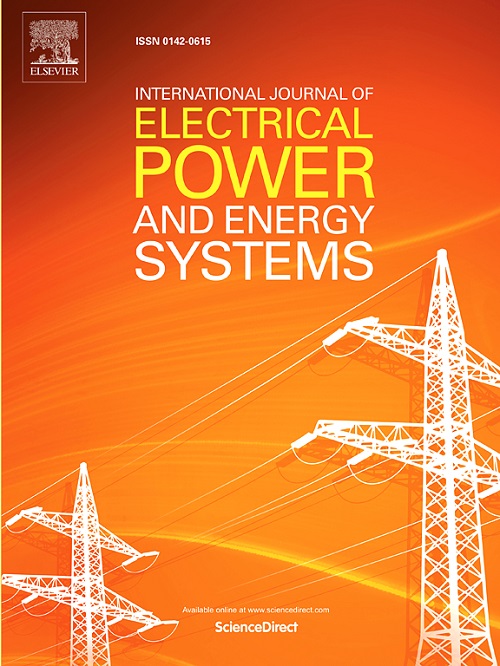Low-frequency oscillations in AC railway traction power systems: Train input admittance calculation and stability analysis
IF 5
2区 工程技术
Q1 ENGINEERING, ELECTRICAL & ELECTRONIC
International Journal of Electrical Power & Energy Systems
Pub Date : 2024-10-17
DOI:10.1016/j.ijepes.2024.110284
引用次数: 0
Abstract
Dynamic interactions among the AC railway power supply network and power electronic converters feeding the trains can result in low-frequency oscillation (LFO) of the catenary voltage, leading to a power outage of the substation and the shutdown of train traffic. To determine the low-frequency stability of the railway traction power systems, the impedance of the power supply network and the total differential admittance of the trains are required. This paper addresses the development of an analytical small-signal model of the train input admittance. For this purpose, small-signal models of each dynamic element involved are obtained. Specifically, the small-signal vector transformation from the actual -frame to the estimated -frame is presented to model the dynamics due to errors in the coordinate rotation of the single-phase four-quadrant converter (4QC) control system. Furthermore, the quadrature signal generator second-order generalized integrator (QSG-SOGI) model is calculated in the synchronous frame. The developed admittance model is intended to accurately predict various types of instabilities and serve as a powerful tool for conducting sensitivity analyses. The validation of the proposed models will be carried out through numerical simulations involving the power supply network and train systems.
交流铁路牵引电力系统中的低频振荡:列车输入导纳计算和稳定性分析
交流铁路供电网络和馈电列车的电力电子变流器之间的动态相互作用会导致牵引电压的低频振荡(LFO),从而导致变电站停电和列车停运。要确定铁路牵引供电系统的低频稳定性,需要了解供电网络的阻抗和列车的总差动导纳。本文探讨了列车输入导纳小信号分析模型的开发。为此,本文获得了每个相关动态元素的小信号模型。具体来说,本文介绍了从实际 dq 帧到估计 dq ̂ 帧的小信号矢量变换,以模拟单相四象限转换器 (4QC) 控制系统坐标旋转误差引起的动态。此外,还计算了同步帧中的正交信号发生器二阶广义积分器(QSG-SOGI)模型。所开发的导纳模型旨在准确预测各种类型的不稳定性,并作为进行敏感性分析的有力工具。将通过涉及供电网络和列车系统的数值模拟对所提出的模型进行验证。
本文章由计算机程序翻译,如有差异,请以英文原文为准。
求助全文
约1分钟内获得全文
求助全文
来源期刊
CiteScore
12.10
自引率
17.30%
发文量
1022
审稿时长
51 days
期刊介绍:
The journal covers theoretical developments in electrical power and energy systems and their applications. The coverage embraces: generation and network planning; reliability; long and short term operation; expert systems; neural networks; object oriented systems; system control centres; database and information systems; stock and parameter estimation; system security and adequacy; network theory, modelling and computation; small and large system dynamics; dynamic model identification; on-line control including load and switching control; protection; distribution systems; energy economics; impact of non-conventional systems; and man-machine interfaces.
As well as original research papers, the journal publishes short contributions, book reviews and conference reports. All papers are peer-reviewed by at least two referees.

 求助内容:
求助内容: 应助结果提醒方式:
应助结果提醒方式:


